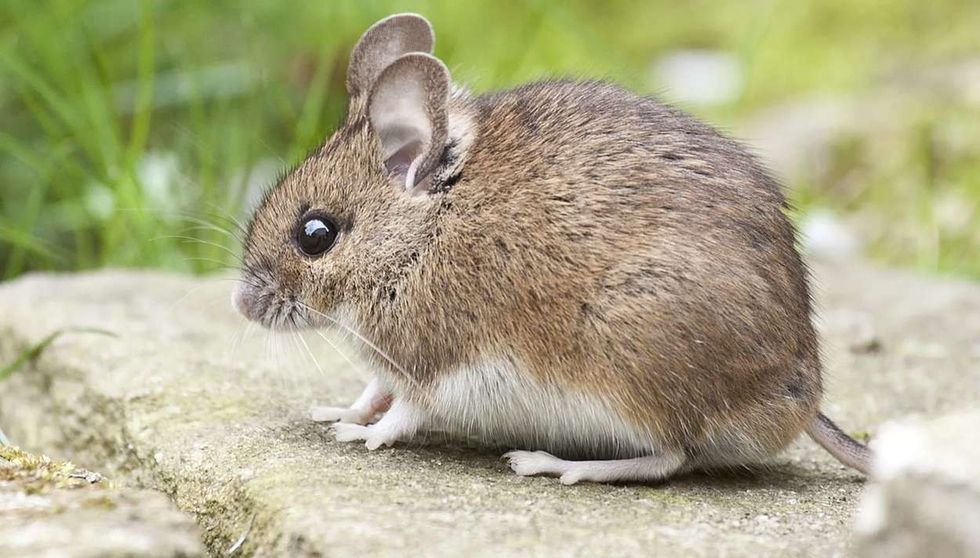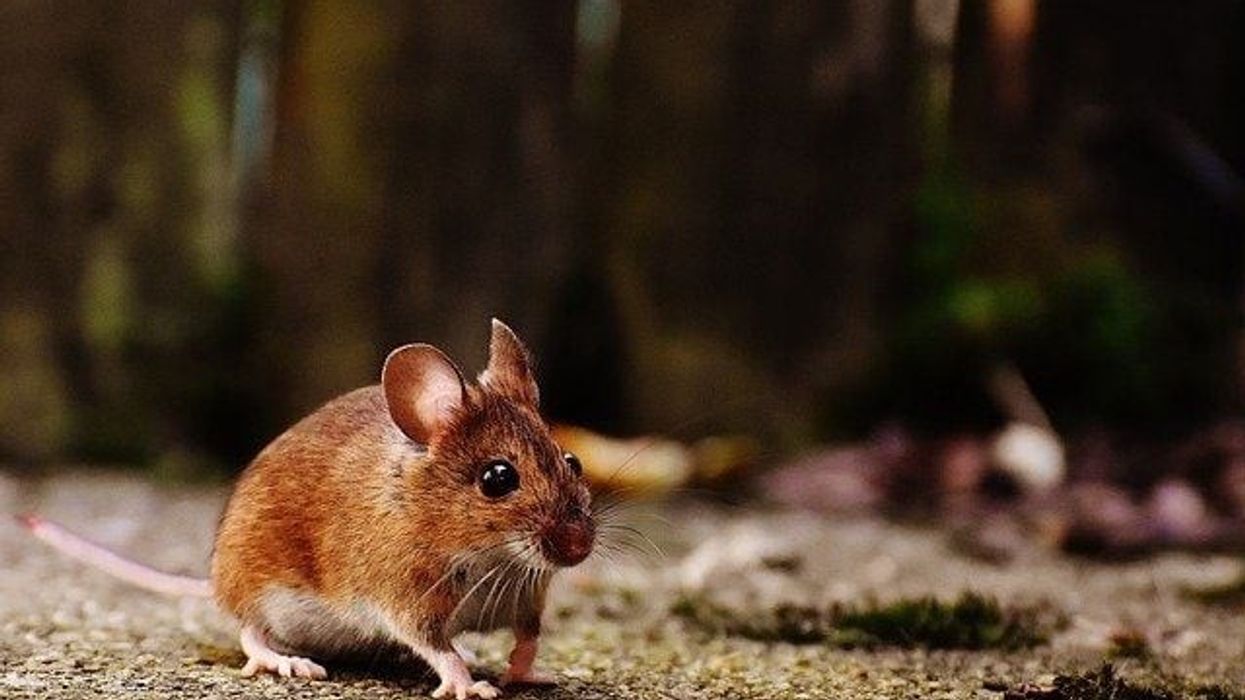A wood mouse is one of many rodent species. It belongs to the family Muridae, which also includes a wide variety of rats and mice such as gerbils and whistling rats.
Its genus, Apodemus, has survived for the longest geological timespan within the family. Its adaptive nature is also proven by its wide geographical reach. It is found not only in mainland Britain but also on many of its islands, in different parts of Europe and North Africa, as well as in parts of Asia, such as China and Japan.
It has different common names across the countries, for example, 'bosmuis' in Dutch and 'waldmaus' in German. The wood mouse is one of the most studied rodents.
Wood mice bear resemblance to their relatives such as the house mouse, harvest mouse, and the yellow-necked mouse. However, wood mouse identification becomes easier with the knowledge that it has relatively large eyes and ears and a characteristic long tail, golden brown to brown fur with yellow spots on its neck.
Its large ears provide excellent auditory perception and help in locating food.
It is also found that its tail tends to be longer than the length of head and body combined. Read on to know more about its diet, habitat, and other fun facts about wood mice.
If you found this article interesting, do check out kangaroo rats and squirrels.
Wood Mouse Interesting Facts
What type of animal is a Wood Mouse?
A wood mouse is a type of rodent, with just two pairs of incisors and large eyes and ears.
What class of animal does a Wood Mouse belong to?
Wood mice belong to the class Mammalia.
How many Wood Mice are there in the world?
Wood mice are very common and widespread across the globe. They seem to be very adaptable and therefore inhabit spaces in large numbers, though the exact number of their population is not known. It may even be considered a pest. IUCN Red List shows its population to be stable and the conservation status is of Least Concern.
Where does a Wood Mouse live?
This wood mouse is quite common and is found across the globe. It is found approximately in all the countries of Europe, some parts of North Africa, and Asian countries such as China and Japan.
What is a Wood Mouse's habitat?
Wood mice tend to live in grasslands, moorlands, farmlands, woodlands, and even your gardens. It can survive at sea level, and even 10,827 ft (3300 m) above it, in the High Atlas mountains.
It usually lives in underground burrows during the summer with divided chambers for nesting and food. They may take shelter in human establishments such as homes, garages, and storehouses as winter arrives.
Who do Wood Mice live with?
Wood mice tend to live together in underground burrows. These burrows are dug into the ground around tree roots. It is known that certain chambers are used as nests and some to store food.
It has been observed that when the nest is occupied by the litters, the females do no allow the male mice to enter. They may also live with humans. They particularly seek shelter to build their nests in buildings during harsh weather.
How long does a Wood Mouse live?
The average lifespan of a wood mouse in wildlife is only about a year. They are common prey to tawny owls. If kept in captivity, they may live up to four years.
How do they reproduce?
They reproduce during the greater part of the year, from March until November. The females carry the young for 21-26 days, known as the gestation period. The female mouse can give birth to up to four litters yearly, each comprising of up to eight mice.
The young rodents are dependent on adult mammals, as they take time to develop. It takes them 13 days to just open their eyes and they only have a thin layer of brown fur. The mouse reaches sexual maturity after four months.
What is their conservation status?
According to the International Union for Conservation of Nature Red List, wood mice have a stable population trend and are categorized as of Least Concern. No special conservation efforts are directed towards this species.
Wood Mouse Fun Facts
What do Wood Mice look like?

Widely known as the long-tailed field mouse, this species has a long tail of 2.75-5.7 in (7-14.5 cm) which happens to be longer than their whole body, 2.3-6 in. Unlike certain prehensile monkey tails, the mouse tail does not serve any other purpose other than for balance.
They have soft, golden brown fur on their body and gray or white patches on their underbelly. Their tail is also partially covered in fur.
These mice have white feet and a yellow spot on their necks. Not to be confused with yellow-necked mice who have a complete band of yellow fur around their neck.
Its large eyes and ears give it a sharp visual and auditory acuity, that helps in its survival. It is a warm-blooded mammal. Its teeth are ever-growing and its gnawing behavior keeps them sharp. Both its jaws only have one pair of incisors.
How do they communicate?
These mice usually use touch to communicate amongst themselves. The wood mouse also has a very acute sense of smell and uses chemical channels of perception to locate food sources. They can find buried food such as seeds without having to engage in a trial and error method.
How big is a Wood Mouse?
The wood mouse is not very large, its length amounting to 2.3-6 in. It does have an exceptionally long tail though; giving rise to its alternative name the long-tailed field mouse. If compared to a wild rabbit, it is three times smaller.
How fast can a Wood Mouse run?
These rodents are mobile, that is, they can run quickly from one place to another. They are very good climbers and are known to swim. If they sense danger, they can jump and run really fast to hide, though the exact speed is not known. They make use of their hind legs to hop while fleeing.
How much does a Wood Mouse weigh?
On average, these rodents weigh a total of 0.8 oz (24 g) whereas the actual range is 0.5-1 oz (15-30 g), amounting to less than a pound. Baby mice weigh a negligible amount.
What are their male and female names of the species?
Unofficially, among the various species of the mouse, the males are called bucks whereas the females go by the name of does.
What would you call a baby Wood Mouse?
Baby mice can be called pups or pinkies, on account of the sparse fur they are born with.
What do they eat?
The wood mouse diet is primarily herbivorous. It comprises seeds, grains, nuts such as acorns, fruits, and at times minuscule insects such as centipedes and earthworms.
Are they dangerous?
These rodents pose a threat to the kitchen gardens and farms as they can ruin crops and eat the produce. In these situations, they are often seen as pests and certain measures can be taken. Wood mice in the house create nest areas by damaging the walls.
Would they make a good pet?
Of course, you can have your own pet Scabbers! Wood mice can be made into pets only if are adopted at an early stage in their lives.
This is so because wild mice can bite humans on provocation. Bringing in this mammal from the wildlife when it is still a pup with closed eyes, will allow it time to bond with you and give you a better chance at domesticating it.
In other cases, you can always adopt one from a pet store. They are social animals and with proper care, they can turn into great pets.
Did you know...
The wood mouse (Apodemus sylvaticus) is not to be confused with Apodemus flavicollis or the yellow-necked mouse. This is a close relative found in the Eurasian belt. It is known to have larger eyes and ears and tends to live in mountainous terrain.
The yellow-necked mouse also has yellow-colored fur around its neck. They also resemble the pygmy field mouse, known as Apodemus microps. Despite the various similarities, wood mice do not interbreed among different species.
The wood mice and the yellow-necked wood mice were differentiated only after 1894. Before that, they were considered to be the same wildlife species.
Wood mice have a special ability to use small objects such as twigs and leaves to demarcate or mark areas while exploring new spaces. Wood mice are one of the only two mammals to have this spatial ability, the other one is us, humans.
The male wood mice tend to groom the fur of the females. This is novel because, in most mammals, it is found to be the opposite.
How to wire bait on a wooden mouse trap?
You may encounter wood mice or a house mouse inside your homes. Wood mouse traps are available to catch wood mice, in case of an infestation.
These include snap traps, live traps, or devices using ultrasound waves. Should you choose a one with a wire, it can be set by pulling the wire back and locking it securely on the hook. Despite the pop culture reference about mice being attracted to cheese, peanut butter proves to be better bait.
What is the scientific name of the wood mouse?
The scientific name of the wood mouse is Apodemus sylvaticus. The scientific names follow the binomial naming system. This dictates using the name of the genus followed by the species.
Here at Kidadl, we have carefully created lots of interesting family-friendly animal facts for everyone to discover! Learn more about some other mammals including a dormouse and rice rats.
You can even occupy yourself at home by drawing one of our Wood mouse coloring pages.










